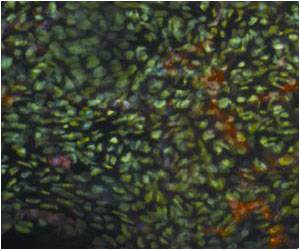Shaping nanometric gold particles - of the size of millionths of a millimeter - to improve their properties in biomedicine and photonics has been made possible.

‘Research exploits the unique feature of the special laser system for applications in biomedicine and photonics, from tumor treatments to energy production.’





"By using ultrafast lasers, which are very intense but very short in duration (of the order of a billion trillion flashes per second), we have realized a world record in optical quality, where all the obtained shaped particles behave like nano-sized clones", explains Andrés Guerrero Martínez, researcher of the Ramón y Cajal Program at the Faculty of Chemical Sciences of the UCM. The study provides the physical and chemical clues required to understand and control such nanomaterials, considered to be "perfect" from an optical point of view.
"We have tried during the last fifteen years to obtain identical nanoparticles, so that they all present the same color and their applications are more efficient. In this work, we have focused on the use of gold nanorods, in which minimal variations in their length or width result in significant changes in the color of the light they absorb", says Luis Liz Marzán, scientific director of CIC biomaGUNE and researcher at the Ikerbasque Program.
From tumor treatment to pollution remediation
The applications of nanoparticles rely on their ability to absorb and reflect light of a specific color in a surprisingly efficient way. These so-called plasmonic effects result in optical properties that cannot be achieved with metals of larger dimensions, even at the millimeter scale.
Advertisement
"Plasmonic particles have also found applications in areas such as information technology, energy production, or environmental pollution control, among others", says Guillermo González Rubio, co-author of the paper who has obtained his PhD at the UCM under the supervision of Andrés Guerrero Martínez and Luis Liz Marzán.
Advertisement
Furthermore, so as to understand the chemical and physical nature of the shaping process, standard characterization techniques (spectroscopy and electron microscopy) have been employed, as well as new theoretical models and advanced computer simulation techniques.
According to Ovidio Rodríguez Peña, a researcher at the UPM, "the demonstration of this goal and the explanation of the processes that allow it to happen represent a paradigm shift that may open new avenues for the development of nanomaterials with improved properties and applications".
Source-Eurekalert









